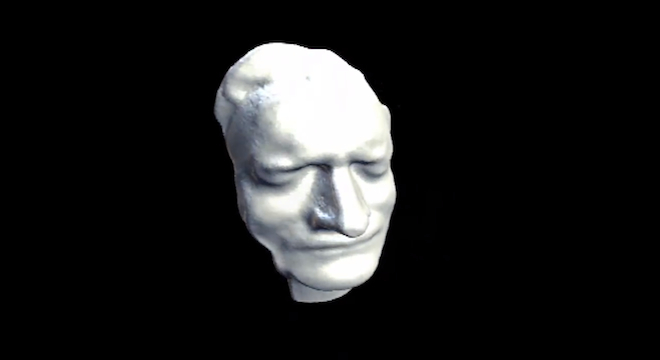He may have died nearly three centuries ago, but Isaac Newton, the father of Newtonian physics and the originator of our common understanding of the force of gravity, lives on in a new format he could not have foreseen: A 3D scan of his death mask taken by a Microsoft Kinect, the motion-sensing camera that Microsoft developed for its Xbox gaming system.
The unlikely project is the result of a collaboration between Microsoft Research, the Royal Society of London, and a science journalism project known as The Periodic Table of Videos, or Periodic Videos for short.
The Royal Society, the UK’s Academy of Sciences, gave Microsoft researchers access to Isaac Netwon’s death mask, the visage of Newton cast out of terra cotta just after he passed away in 1727 at the age of 84.
The researchers used a Kinect for Windows device, which is a PC-based version of the same device for the Xbox, to scan up and down the death mask and create a nearly identical 3D virtual copy of it, which could be used to print a new copy out of a 3D printer (though unfortunately, they didn’t do that in this case).
Check out a video of the scanning process taken by the British science program production company Periodic Videos:
“We want to show the capability for Kinect to be used in many more environments and scenarios than gaming and entertainment,” Microsoft Research’s PR director Kelly Berschauer told TPM in an email. “This scanning of the mask was just an informal project to further test the capabilities of the Kinect Fusion system and to record in 3D, for the Royal Society, one of the many artefacts that they hold in their library.”
The project came together when Royal Society foreign secretary Martyn Poliakoff, also a member of Periodic Videos, who narrates this video’s introduction, recommended to Microsoft that the Kinect Fusion 3D scanning system be tried out on Newton’s death mask, according to Periodic Video journalist Brady Haran.
“There aren’t that many death masks of famous people just lying around,” Haran told TPM via email. “We chose Newton’s because it was one we had access to thanks to the Royal Society and it just seemed fun… There was no extra significance, though obviously with someone as influential as Newton you can certainly attach significance to it!”
Microsoft also hopes the video illustrates the enormous potential of its Kinect device, which offers enterprising developers and other companies an affordable motion-sensor and highly accurate built-in camera.
“The Kinect for Windows program seeks to provide anyone with an idea to take Kinect and commercialize it,” Microsoft’s Berschauer said. “Already we’re seeing it be used in retail, hospitality, manufacturing, healthcare and more.”






